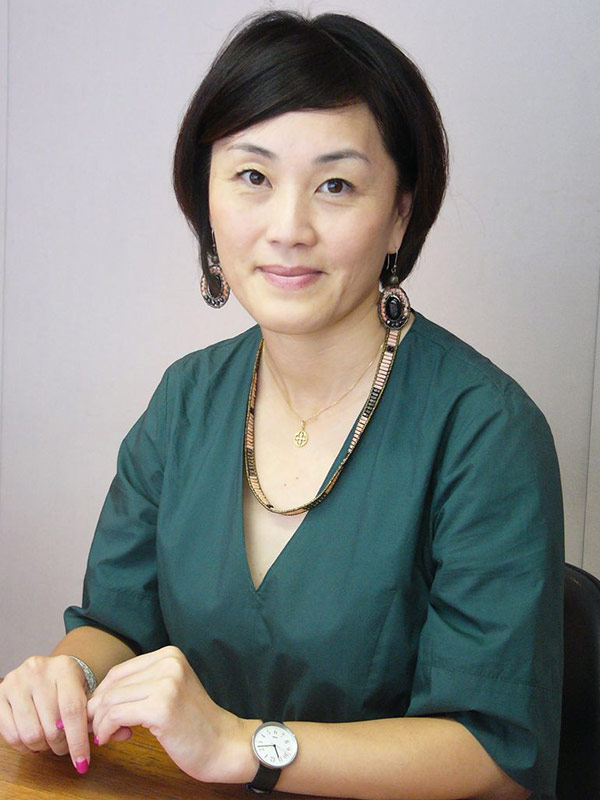
TOKYO —
As professional interior designers, architects and project managers, the Steven Leach group has carved out a niche for itself in nine countries in Asia and Eastern Europe. The company was established in Hong Kong 40 years ago and has been in the Japanese market for the past 20 years.
In Japan, the company offers a range of services that can be tailored to suit individual clients’ requirements, including interior design, turnkey solutions (designing and building), project and construction management and architectural design.
Heading the operations in Japan is Noriko Kitamura. A graduate of Aoyama Gakuin, Kitamura went to the U.S. where she studied interior design and architecture at the Academy of Arts College in San Francisco. She joined Steven Leach Associates in 2008 as country manager for Japan.
Has 2013 been a good year so far?
Yes it has, better than we projected. One of the reasons is that office space rentals have bottomed out, so many of our clients decided to move into new space for lower rentals. Our fastest growing sector is commercial interior design. In addition to office design, we do car showrooms, business lounges at airports and event spaces.
Who are your clients?
About 80% are multinational companies.
How do you market your company?
Networking and reputation are the best marketing methods, along with recommendation from other clients.
What trends are you seeing in office design?
The demand now is for mobility of the workplace. We are living and working in a wireless environment, with smartphones and iPads, so you don’t really need to have a desk. A company can rent a smaller space for many staff because they don’t need desks for everybody. There is also a trend to create casual meeting spaces with a variety of interior furniture designs.
Global companies invest money in office design to convey their company culture, whereas for many Japanese companies, the office is just a space to work in. There is nothing to motivate their staff. But we are slowly seeing a change in this thinking and we are getting more Japanese clients.
IT-related companies know how to work with mobile tools and they know what kind of interior design they want and they want to show to their clients, so they are way ahead in terms of implementing new office design trends. Financial companies understand the trend but they are still hesitant to introduce that new work style into their space.
Another trend is eco-friendly offices. As far as lighting is concerned, LED is already standard and there is a demand for glass walls to provide natural light and help clients cut back on electricity. We are strongly committed to clean building and office design and offer a LEED (Leadership in Energy and Environmental Design) consulting service. Many of our American clients especially are interested in getting that certification.
What are some unique characteristics of the Japanese market?
When a new fit-out is constructed, there are building nominated contractors we have to use. In those cases, we cannot identify the contractor through a tender. Negotiation skills backed by our in-house cost database are needed to bring the quotes of the building nominated contractors into a realistic frame. Our independent approach being clearly on the side of the client has created a reputation which is valued by many repeat clients.
Another point about Japan is that when you vacate an office, you have to restore it back to the way it was when you moved in, no matter what design changes you made while you were there. This is quite a substantial cost factor and often overlooked by clients when preparing their project brief.
In general, what do you think of office design in Japan?
Early on in my career, I used to work at Mitsui Bussan, a historical trading company. It was the stereotypical Japanese office – gray cabinets, no partitions, desks lined up in a row. That was my starting point. Then when I studied in San Francisco, it opened my eyes. My teacher showed us offices of IT companies and I was stunned. I was really impressed at the advanced working style and how lively and creative a workplace could be. That’s when I decided that commercial interior design would be my life’s work.
Tell us about your team.
We have 14 staff – architects, interior designers and business development. We’ll probably need to expand because Tokyo is developing the Shinagawa area as an IT hub to attract more foreign companies, so we are expecting more business.
How is Steven Leach structured?
Steven Leach acts quite independently in each country since the specifics of the construction industry are very different. However, on a marketing level we support each other and we also exchange ideas about best practices and new trends in office design.
What is a typical day for you?
I show up around 9:30 a.m. During the day, I go out to meet clients, contractors and network with real estate people. I also get involved in projects. We sometimes need to work on weekends because that’s when our clients move to new offices.
See original article here